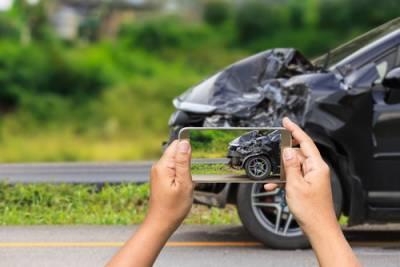Illinois Supreme Court Rules Post-Accident Photographs Admissible Without Expert Testimony
By: Eddie Hettel
 The Illinois Supreme Court’s decision in Peach v. McGovern clarifies that expert testimony is not required to admit post-accident vehicular photographs. Previously, Appellate Courts had differing opinions as to whether a party was required to present expert testimony about a photograph before it was admitted into evidence.
The Illinois Supreme Court’s decision in Peach v. McGovern clarifies that expert testimony is not required to admit post-accident vehicular photographs. Previously, Appellate Courts had differing opinions as to whether a party was required to present expert testimony about a photograph before it was admitted into evidence.
The Court held that photographic evidence is admissible if it has a reasonable tendency to prove or disprove a material fact at issue in the case but may be excluded when irrelevant or immaterial or if its prejudicial nature outweighs its probative value. Peach v. McGovern, 2019 IL 123156, ¶ 27. In deciding the admissibility of post-accident vehicular photographs, trial courts must determine whether the photos make the resulting injury to the plaintiff more or less probable and whether the photos may be relevant with regard to impeachment. See id.
The essential question in deciding the admissibility of post-accident vehicular photographs is “whether the jury can properly relate the vehicular damage depicted in the photos to the injury without the aid of an expert.” Id. at ¶ 35. This is a question of law that must be decided by a trial judge.
In Peach itself, the Court stated that if a jury is allowed to consider relevant testimony about vehicle speed and impact forces, a jury should be permitted to consider photographs that depict the damage, or lack thereof, done to the vehicles. Id. at ¶ 39. The Court further stated that testimony about the speed of the vehicles, the force of impact, and the existence or extent of any resulting injuries in an automobile accident does not necessarily require scientific, technical, or other specialized knowledge in order for the trier of fact to understand the evidence and determine a fact in issue. Id. ¶ 45.
At trial, questions of fact existed as to the speed of the crash and the extent of plaintiff’s injuries. The Court found that the photographs in question had a tendency to make a fact that was of consequence to the determination of the action, the existence and extent of plaintiff's injuries, more probable or less probable than it would be without the evidence and to aid in the determination of credibility of the parties. Id. at ¶ 47.
Plaintiff’s attorneys should be cognizant of this clarified standard when retaining expert witnesses and preparing for trial. Defendants may now seek, without an expert, to admit post-accident vehicular photographs that reveal minimal damage in attempt to diminish the extent of plaintiffs’ injuries and undermine their credibility. Plaintiff’s attorneys should prepare their clients who have suffered injury as a result of a vehicular crash to provide detailed causation and damages testimony. Moreover, attorneys should be prepared to retain accident reconstructionists and medical experts to relate the damage depicted in post-accident photographs to the injuries suffered by the plaintiff.
Should expert testimony not be available, plaintiffs can rely on this decision to admit post-accident photographs that depict extensive vehicular damage. However, attorneys should always consider retaining experts to relate the damage depicted in photographs to the injures sustained by the plaintiff, thus providing the trier of fact with a comprehensive view of the evidence.
TKK blog Center
September 17, 2025 in Personal Injury
Back to School: Are Universities Liable for Student Injuries?
Read MoreAugust 15, 2025 in Personal Injury
Suing for Amputations, Burns, and Other Catastrophic Injuries in Illinois
Read More









